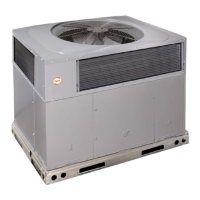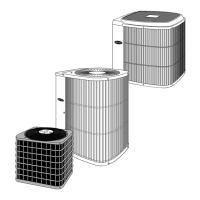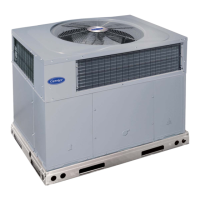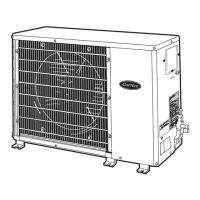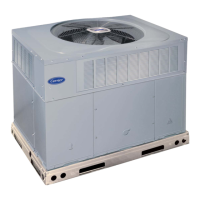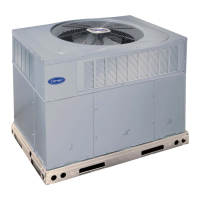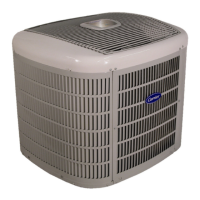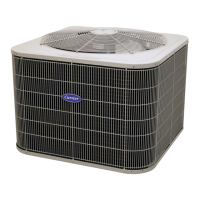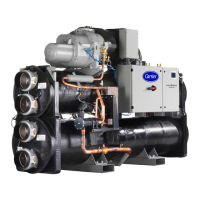PHJ4 and WJH4: Owner’s Information Manual
Manufacturer reserves the right to change, at any time, specifications and designs without notice and without obligations.
2
Safety Considerations
Improper installation adjustment, alteration, service, maintenance, or use
can cause explosion, fire, electrical shock, or other conditions which
may cause death, personal injury, or property damage. Consult a
qualified installer, service agency, or your distributor or branch for
information or assistance. The qualified installer or agency must use
factory-authorized kits or accessories when modifying this product Refer
to the individual instructions packaged with the kits or accessories when
installing.
Follow all safety codes. Wear safety glasses, protective clothing, and
work gloves. Use quenching cloth for brazing operations. Have a fire
extinguisher available. Read these instructions thoroughly and follow all
warnings or cautions included in literature and attached to the unit.
Consult local building codes, the current editions of the National
Electrical Code (NEC) NFPA 70 and NFPB 90B - Installation Warm Air
Heating and A/C System (Residential).
In Canada refer to the current editions of the Canadian electrical Code
CSA C22.1.
Recognize safety information. This is the safety-alert symbol . When
you see this symbol on the unit and in instructions or manuals, be alert to
the potential for personal injury. Understand these signal words;
DANGER, WARNING, and CAUTION. These words are used with the
safety-alert symbol. DANGER identifies the most serious hazards which
will result in severe personal injury or death. WARNING signifies
hazards which could result in personal injury or death. CAUTION is
used to identify unsafe practices which may result in minor personal
injury or product and property damage. NOTE is used to highlight
suggestions which will result in enhanced installation, reliability, or
operation.
NOTE: Installer: This manual should be left with the equipment user.
Operating Your Unit
The operation of your heat pump system is controlled by the indoor
thermostat. You simply adjust the thermostat and it maintains the indoor
temperature at the level you select. Most thermostats of heat pump
systems have 3 controls: a temperature control selector, a FAN control,
and a SYSTEM or MODE control. Refer to your thermostat owner’s
manual for more information.
To better protect your investment and to eliminate unnecessary service
calls, familiarize yourself with the following facts:
1. During heating, increasing the desired temperature setting more
than 2°F (1.1°C) may cause the supplemental heaters to be turned
on for a short period of time to satisfy the demand. Needless use of
the supplementary heat reduces potential energy savings.
2. Ice or frost tends to form on the coil during winter heating
operation. Your unit is designed to automatically melt the ice. When
in this defrost cycle, it is normal for steam or fog to rise from the
outdoor unit, and for water to drain from the outside of unit. Do not
be alarmed!
To start the unit:
1. Turn on the electrical power supply to unit.
2. Set MODE control to desired mode and select temperature.
To shut off unit:
NOTE: If the unit is being shut down because of a malfunction, call
your dealer as soon as possible.
1. Set system MODE control to OFF.
2. Turn off the electrical power supply to unit.
Cooling Mode
With the SYSTEM or MODE control set to COOL, your unit will run in
cooling mode until the indoor temperature is lowered to the level you
have selected. On extremely hot days, your unit will run for longer
periods at a time and have shorter “off” periods than on moderate days.
Heating Mode
With the SYSTEM or MODE control set to HEAT, your unit will run in
heating mode until the room temperature is raised to the level you have
selected. Of course, your unit will run for longer periods to maintain a
comfortable environment on cooler days and nights than on moderate
ones.
Supplemental Heat
Your unit is your primary heating source. Your system may also be
equipped with a supplemental heating source such as electric heat. On
cold days and nights, your system will automatically turn on the
supplemental heat, as needed, in order to maintain the level of comfort
you have selected.
When your heat pump needs additional heat to keep you comfortable
your thermostat will turn on the supplemental heat (if equipped). When
the thermostat calls for supplemental heat, you may notice the indoor fan
increase its speed.
Defrost Mode
When your unit is providing heat to your home or office and the outdoor
temperature drops below 45°F (7.2°C), moisture may begin to freeze on
the surface of the coil. If allowed to build up, this ice would impede
WARNING
!
FIRE, EXPLOSION, ELECTRICAL SHOCK HAZARD
Failure to follow this warning could result in personal injury, death,
and/or property damage.
Installation and servicing of this equipment can be hazardous due to
mechanical and electrical components. Only trained and qualified
personnel should install, repair, or service this equipment.
WARNING
!
FIRE, EXPLOSION, ELECTRICAL SHOCK HAZARD
Failure to follow this warning could result in personal injury, death or
property damage.
Do not use this unit if any part has been under water. Immediately call a
qualified service technician to inspect the unit and to replace any part of
the control system which has been under water.
WARNING
!
ELECTRICAL SHOCK HAZARD
Failure to follow this warning could result in personal injury or death.
Before performing recommended maintenance, be sure the main power
switch to unit is turned off and a lock-out tag is installed.
CAUTION
!
CUT HAZARD
Failure to follow this caution may result in personal injury.
Sheet metal parts may have sharp edges or burrs. Use care and wear
appropriate protective clothing, safety glasses and gloves when
handling parts and servicing this unit.
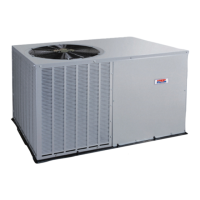
